What Is a Content Workflow?
A content workflow is the sequence of activities involved in creating content from start to finish.
For example, here’s the content workflow for creating an article:
- Determining the content’s intent
- Performing keyword research
- Researching article topics
- Preparing the content brief
- Writing the draft
- Editing the draft
- Publishing the finished page
Your content team will execute your content workflow. And they may use tools to facilitate their work.
If you produce content, you likely already have a content workflow. Even if it lives only in your head.
But this may not be the best approach to content production.
So, let’s explore the importance of implementing a proper content workflow when creating content. Plus, the key components of an effective content workflow.
And how you can create one if yours needs an overhaul.
Key Components of an Effective Content Workflow
An effective content marketing workflow will comprise:
- Detailed documentation: Where you’ve written down all essential information relating to the content workflow, like its stages and tasks. So that anyone who needs a refresher can reference it anytime. And new team members can quickly familiarize themselves with your processes.
- Defined content team roles: With clear duties for each team member
- Clear due dates for deliverables: To ensure team members submit their work by their deadlines. And help the project proceed on schedule.
- Open communication channels: Allowing anyone with questions to get answers from others quickly. Without holding up the production process.
The Importance of Implementing a Proper Content Workflow
With such a proper content workflow in place, scaling content production becomes straightforward.
Why?
Because you’ve built a content creation system. To ramp up your content volume, you simply need to invest more resources into each content workflow step.
In contrast, a content workflow that involves deciding your next step of content creation on the fly, based on your memory of what you did previously, may lead to confusion and delayed production.
This is if your team:
- Misremembers due dates
- Has to double back to complete forgotten steps
You may also face difficulty increasing the amount of content you produce.
Because producing more content can equal having more tasks to oversee. More team members to supervise. And more due dates to keep track of.
There’s no way you can manage all this in your head.
Types of Content Workflows
If you’ve decided to revamp your content workflow, you’ll first need to decide which type of content workflow to adopt.
Here are three of them. Where each one provides a different focus on the content creation process.
Task-Based Content Workflows
A task-based content workflow breaks the content creation process down into tasks.
Here’s an example of a task-based content workflow template:
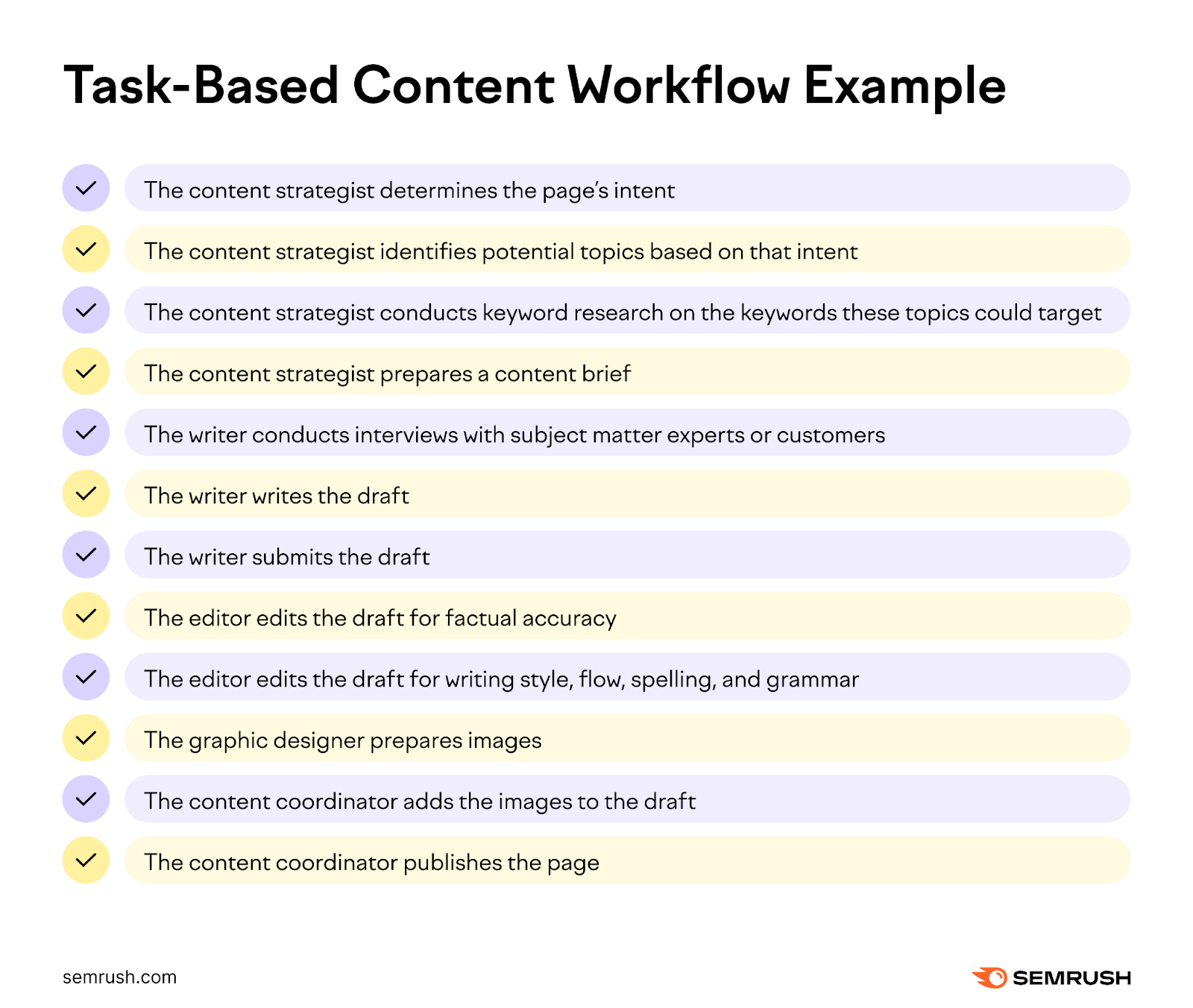
A task-based content workflow makes each step of content production clear. With no ambiguity as to who needs to take action at each step.
As a result, task-based content workflows can be especially useful for larger content projects. Where creating the content involves many steps. And many team members.
But a task-based content workflow can also appear intimidating and overwhelming. Especially if you’ve finely split a project’s responsibilities into a (very) long list of tasks. Such that your team members feel discouraged when they look at what’s on their plate.
Status-Based Content Workflows
A status-based content workflow categorizes the content production process into stages. Where each stage, or status, may involve one or more content production tasks. And one or more team members.
A status-based content workflow could have these statuses:
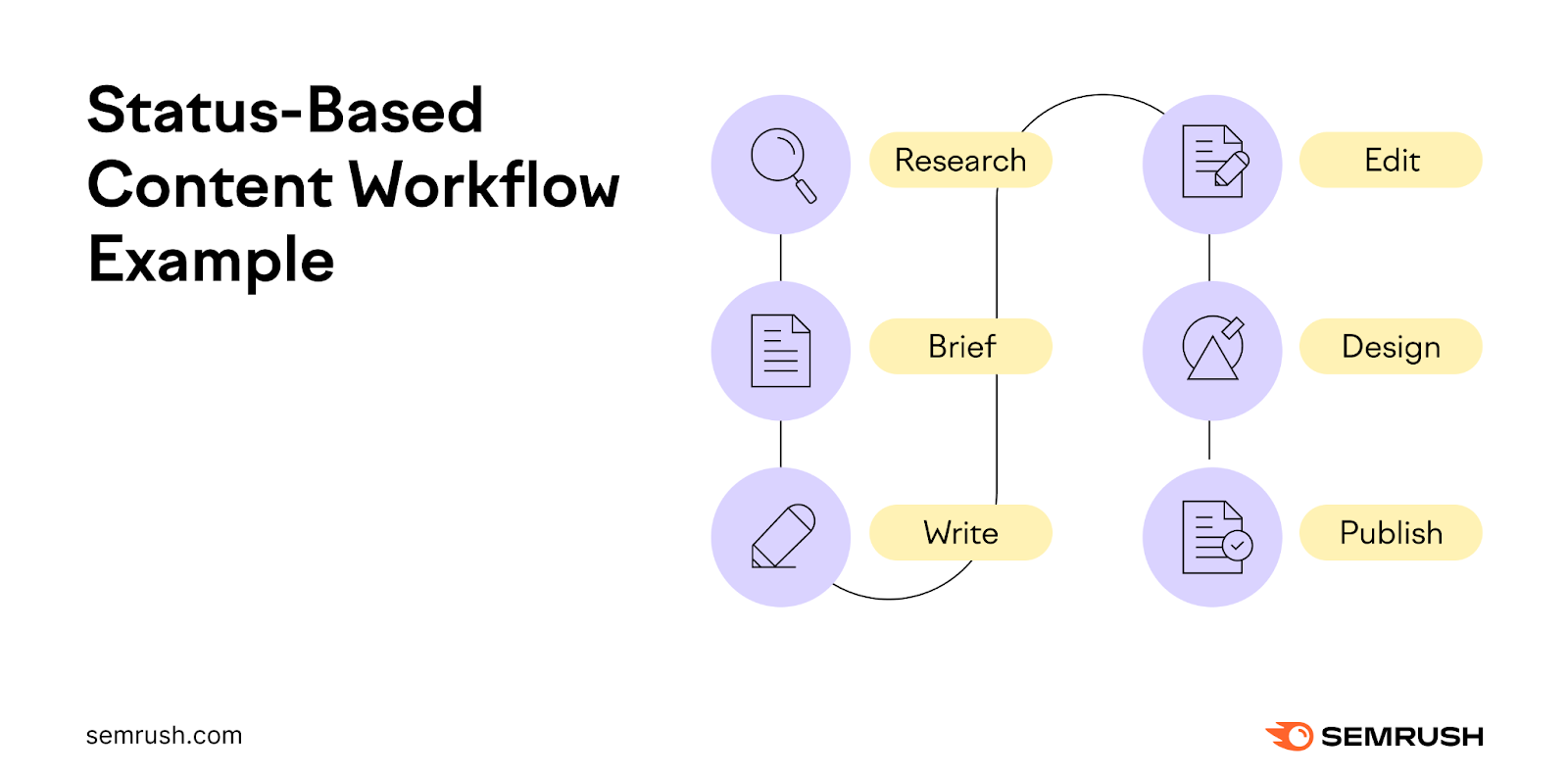
Using a status-based content workflow is helpful for getting a general overview of the project’s progress through the content creation pipeline.
Instead of tracking a blow-by-blow account of exactly who is doing what right now. Which may come across as micromanaging. And may not be the best use of time.
The drawback of a status-based approach to content?
You get less visibility into the tasks happening at each stage.
Which could introduce uncertainty into the content creation process. And cause you to spend more time finding out who is currently working on the project—and what they’re doing—when you check on it.
Hybrid Content Workflows
A hybrid content workflow takes both a status- and task-based approach to content production.
It splits the content creation process into various stages. And outlines the tasks team members need to take at each stage.
A hybrid content workflow could look like this:
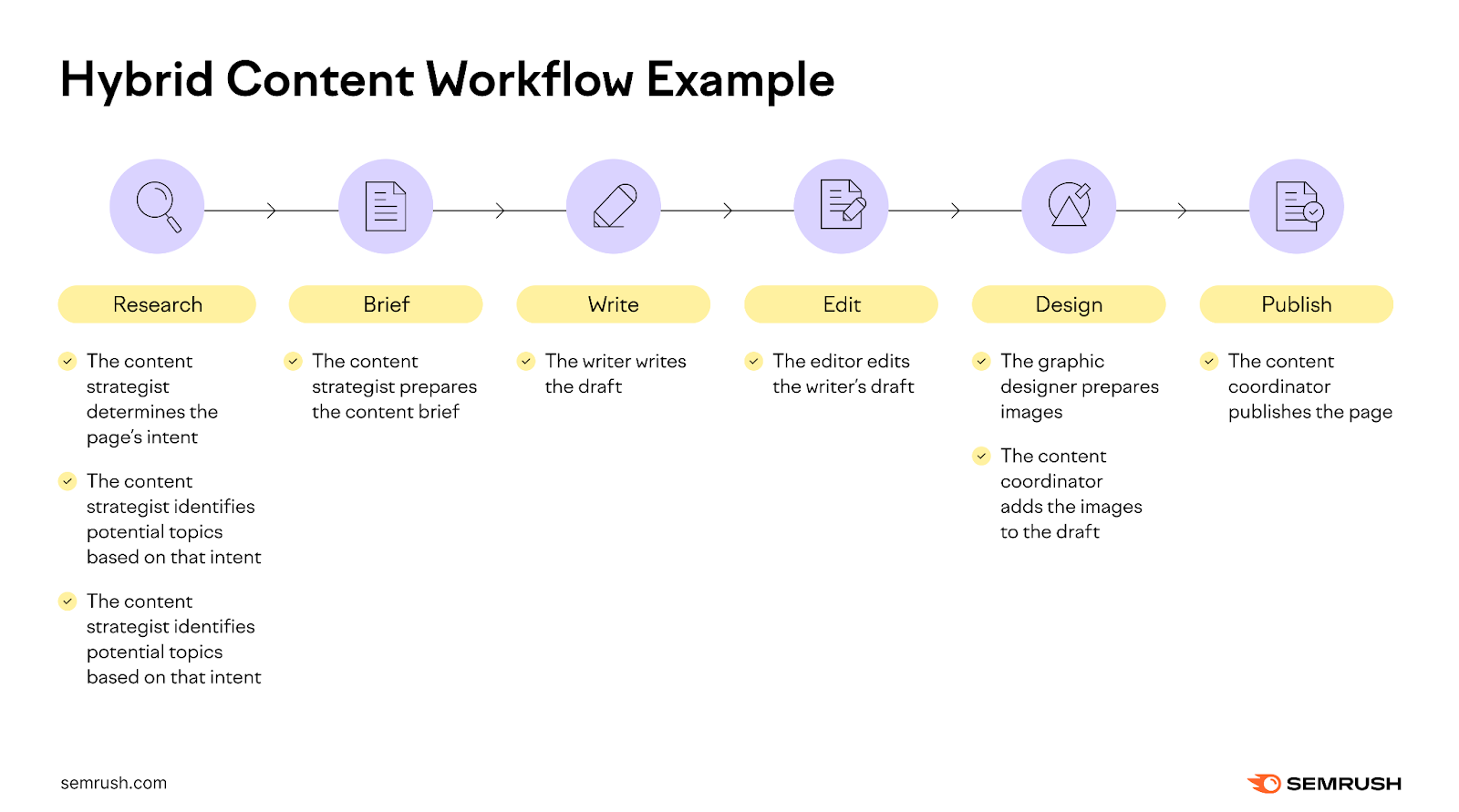
By combining elements of both status- and task-based workflows, hybrid content workflows offer a macro overview of a content project’s progress.
While still providing a micro look into who is carrying out each stage’s tasks.
Preparing to Create an Effective Content Workflow
Before creating a workflow to manage content production, you need to be clear on the content you want to produce in the first place. And the tools you’ll use to produce it.
Use these steps to point yourself in the right direction.
1. Establish Your Content Goals
Decide what you want to get out of creating content. For example:
Avoid chasing multiple goals at once.
Otherwise, you may stretch your limited resources too thin. And not make significant progress on any of your goals.
Instead, focus on pursuing one (at most, two) content goals well. You can always adjust your content goals as your business priorities change.
Further reading: 6 SEO Goals to Help You Grow Your Business
2. Research Your Target Audience
Knowing your target audience’s demographics, interests, desires, and pain points will help you create content that effectively addresses these.
So that your target audience gets—and stays—interested in your content. And the products or services featured in it.
Here’s an example to illustrate:
Let’s say you run a software-as-a-service (SaaS) business selling accounting software. And your target audience is small business owners.
You discover that many small business owners don’t know how to automate their bookkeeping. Which is something your accounting software can help with.
So, your SaaS content marketing efforts—and your SaaS content workflow—could involve producing content to:
- Raise awareness among small business owners of your software’s automation capabilities
- Educate small business owners on how they can automate their bookkeeping using your software
Methods of researching your target audience include:
Learn more in our guide to finding your target audience.
3. Select the Appropriate Content Formats and Types
A content’s “format” refers to the medium in which you present it. Like text, video, or audio.
While the way you structure and package content for consumption will determine its “type.” Like a blog post, YouTube video, or podcast episode.
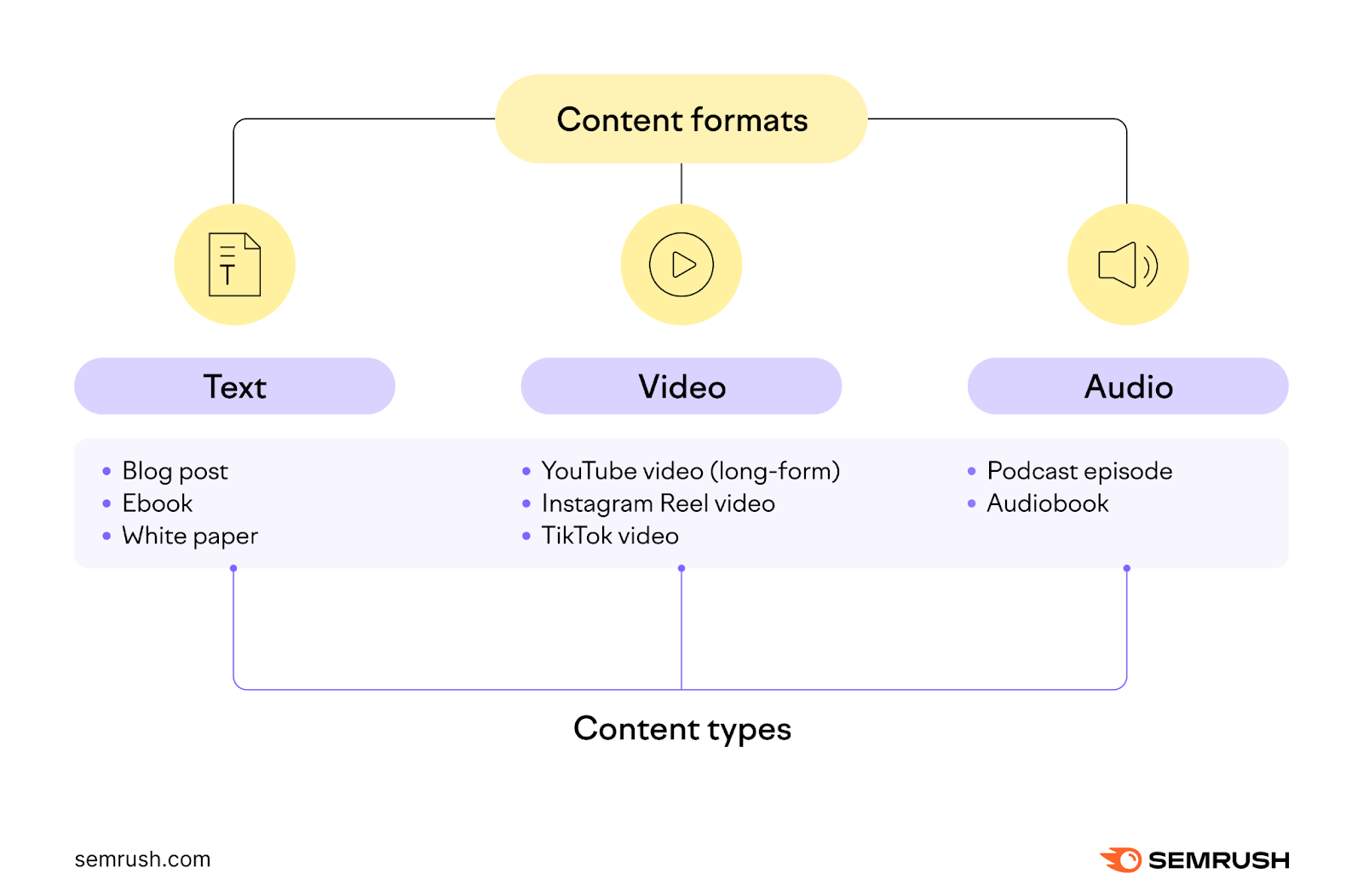
Use your knowledge of your target audience and content goals to identify suitable content formats and types.
For example, TikTok is the top search engine for over half of Generation Z individuals. Not Google.
So, if Generation Z is your primary target audience, you may want to prioritize creating not just video (being the content format), but video for TikTok (being the content type). And also work on your TikTok SEO.
4. Plan Your Content Production Frequency
Decide how often you want to produce—and publish—content. This could be:
- One blog post a week
- Five Instagram posts per week
- One YouTube video a month
In general, the more frequently you produce content, the greater your content marketing return on investment (ROI) will be. But at the cost of juggling more complex content workflows.
And having to spend more time, money, and effort.
For example, freelance writers most commonly charge between $250 and $399 for a 1,500-word blog post.
We’ll assume a middle-ground figure of $325 for simplicity. So, if you want to publish one 1,500-word blog post a week, you’ll need to pay freelance writers $325 x 4 = $1,300 for a month’s worth of blog posts.
This figure doesn’t include the cost of having your full-time staff—such as an in-house content strategist or editor—assist with the blog posts as well.
Our advice?
Aim to strike a balance between producing content frequently enough to help achieve your content goals. But without overstretching your resources or team.
5. Use Content Production Tools
The right tools and resources can help improve your content’s quality. And speed up your content production efforts.
For example, Semrush’s SEO Writing Assistant is a writing tool that can assess whether your content is readable and in your preferred tone of voice. It can also provide recommendations for improving your content’s search rankings.
To use the tool, log in to your Semrush account and click “Content Marketing” > “SEO Writing Assistant.”
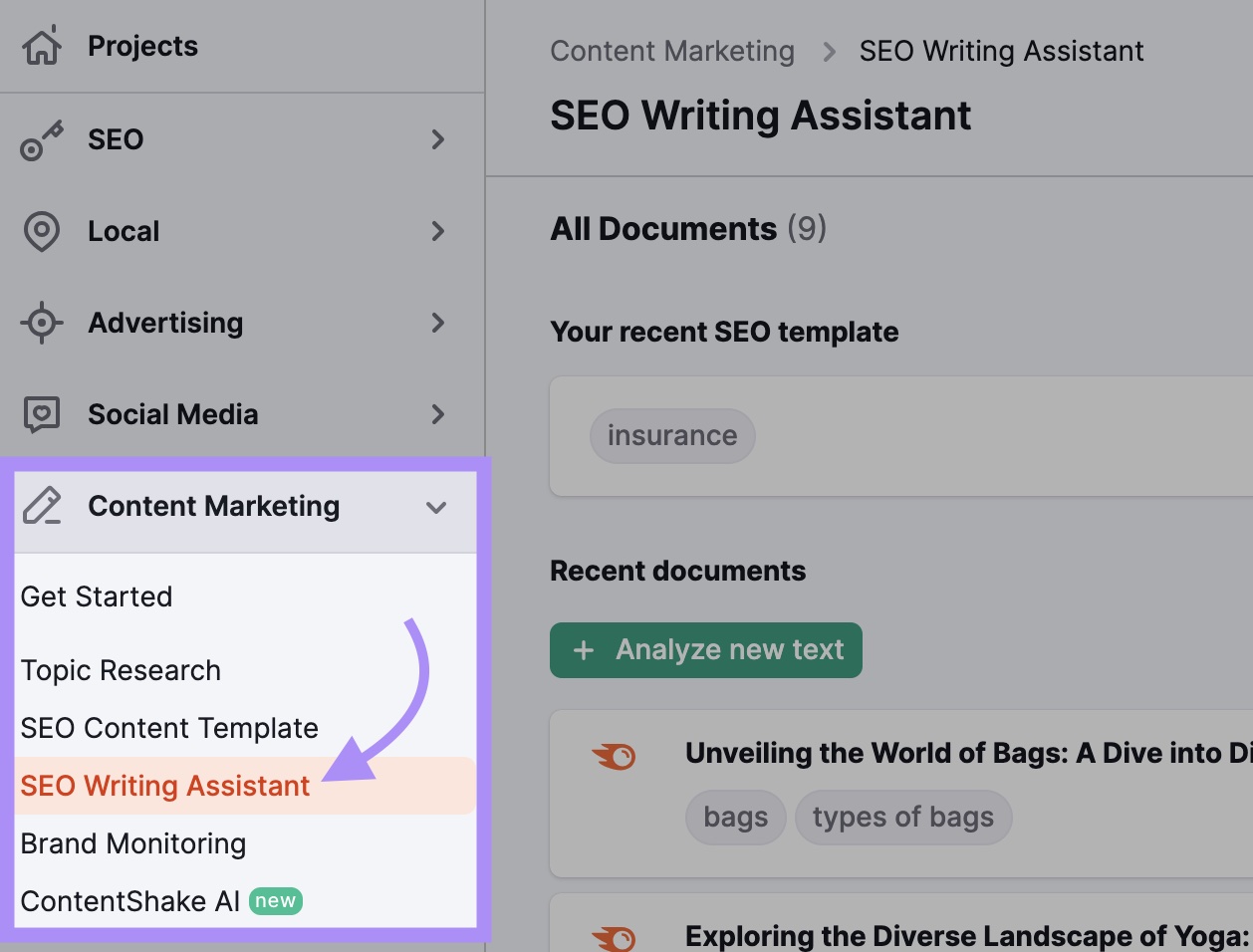
Then, click “Analyze new text.”
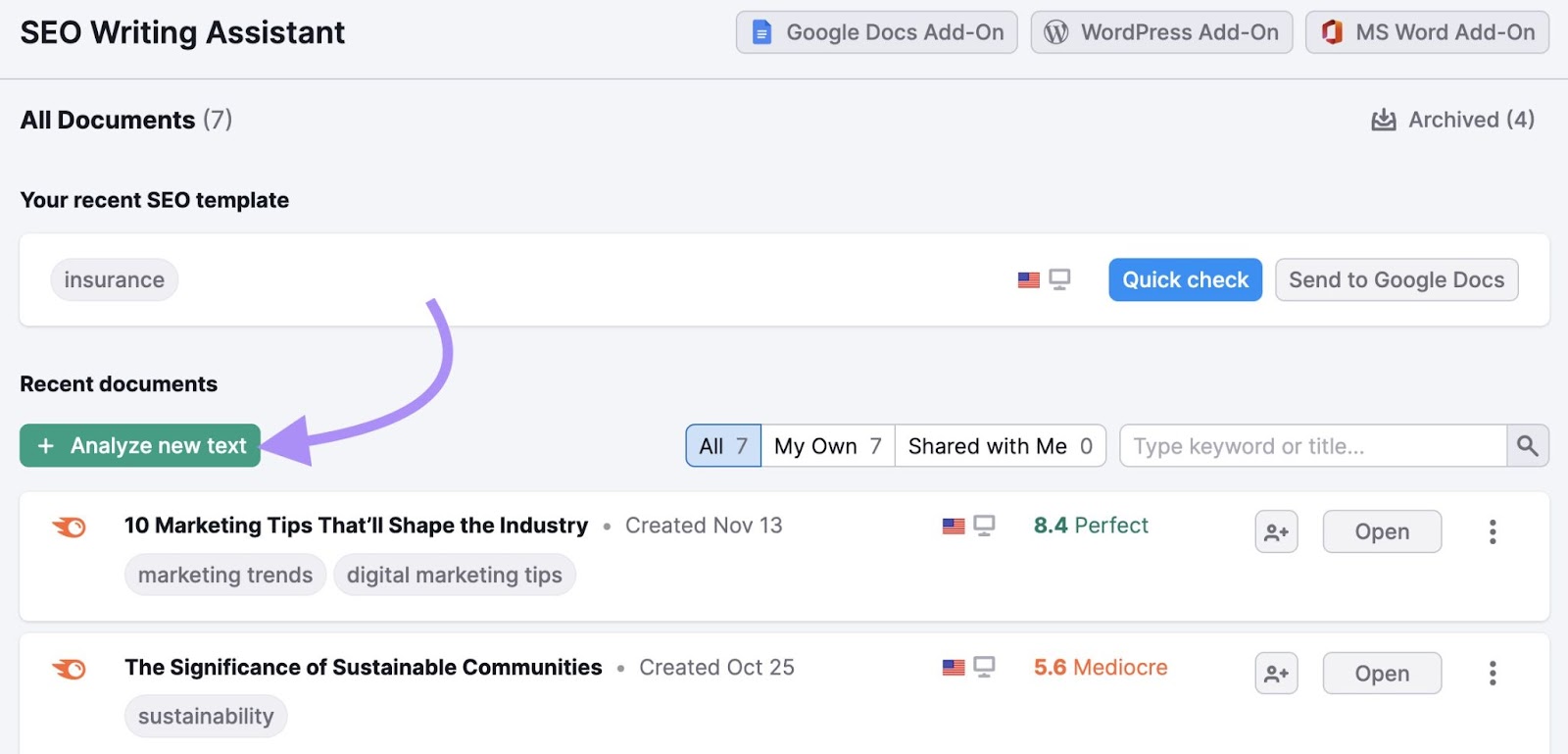
Type or paste your text into the tool’s editor. Add your target keywords and set up your target audience, then click “Get recommendations.”
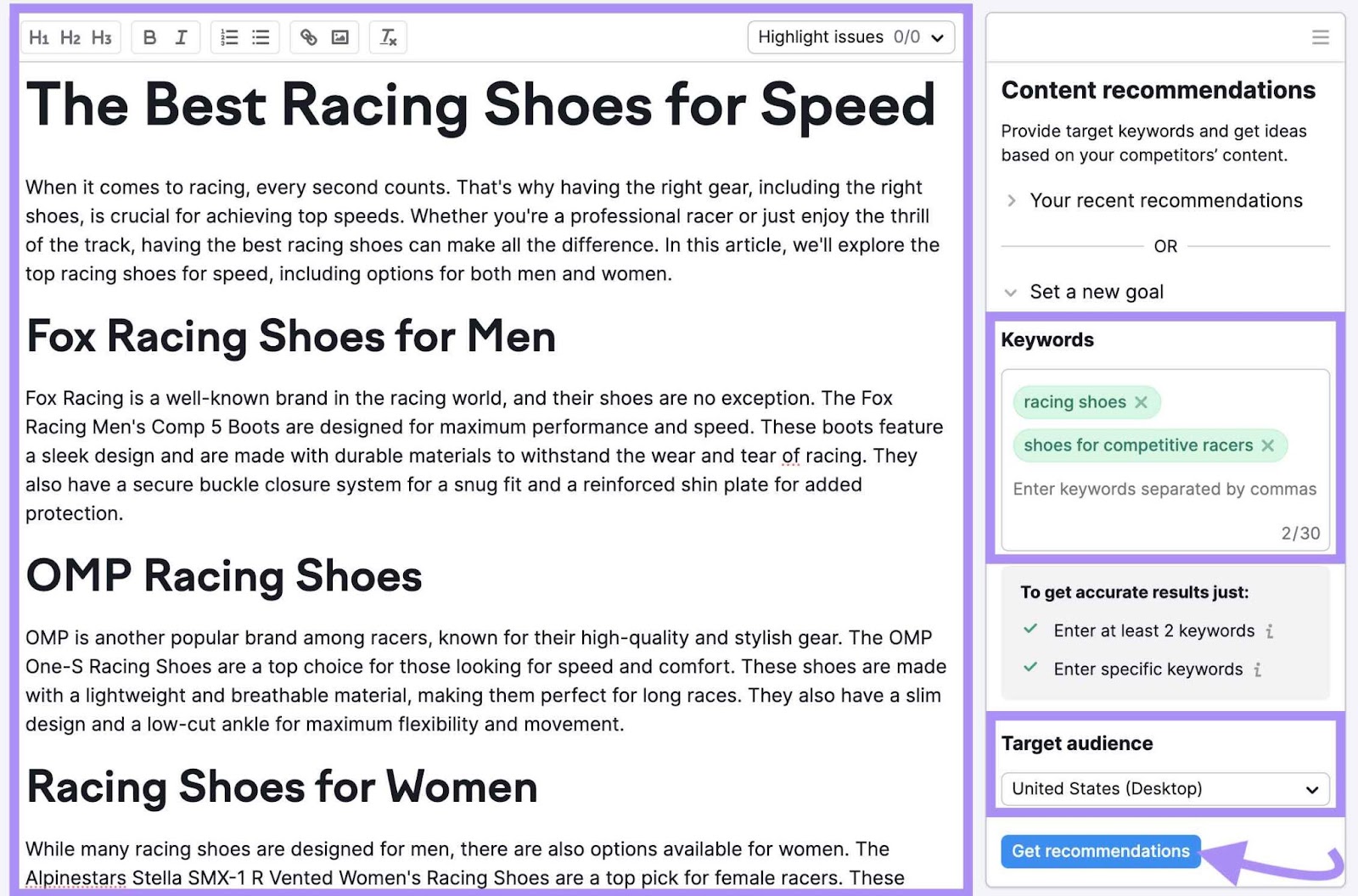
The SEO Writing Assistant grades your text on readability, SEO, originality, and tone of voice.

The tool will also give you suggestions to improve your content in each of these four categories.
For example, if you click on “Highlight Issues” and select “Readability,” you’ll see portions of the article that need improvement from a readability perspective highlighted.
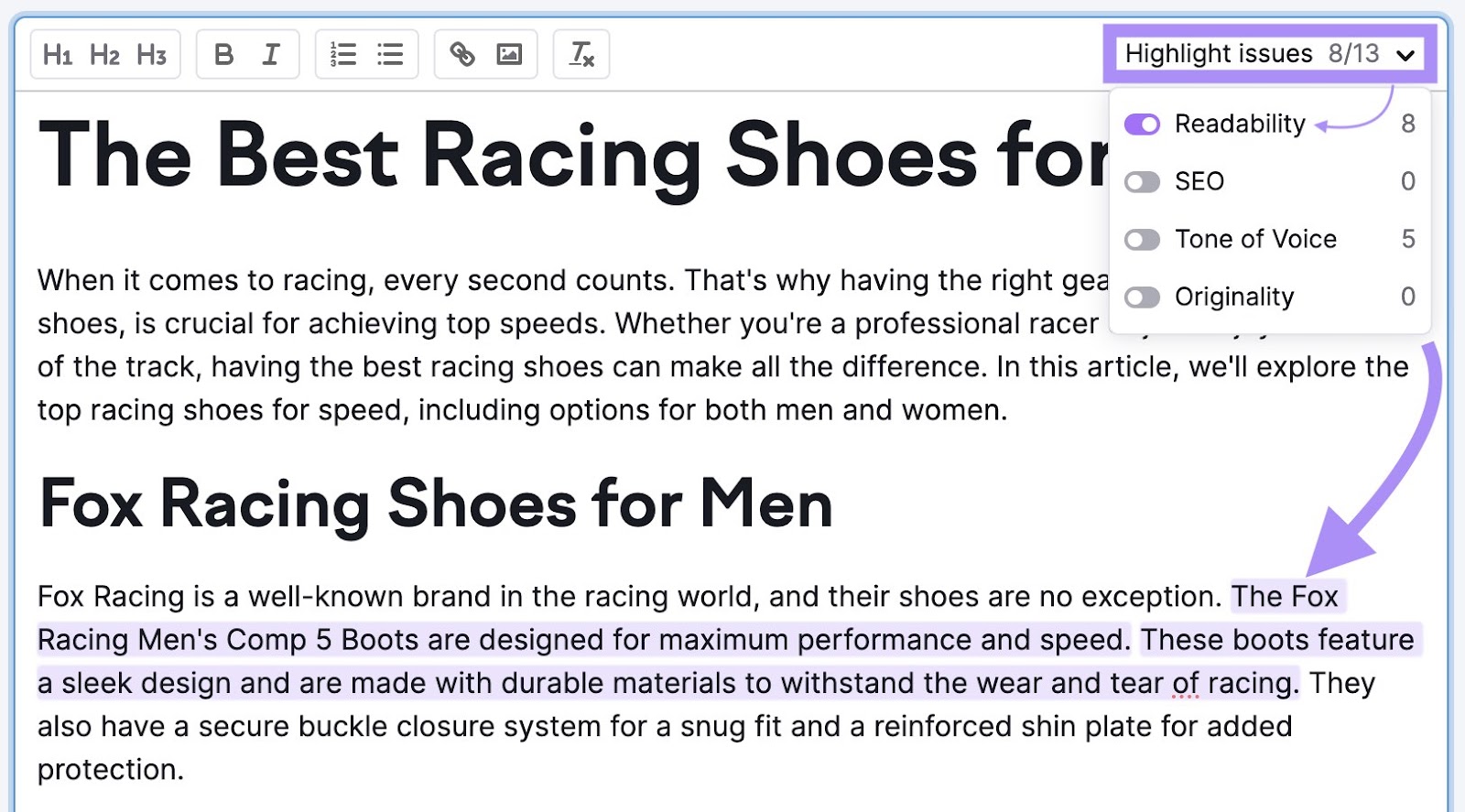
Alternatively, you can also find issues with your content by clicking on the relevant category in the top right corner.
For example, you can click “SEO” to learn how to optimize your writing for organic traffic.
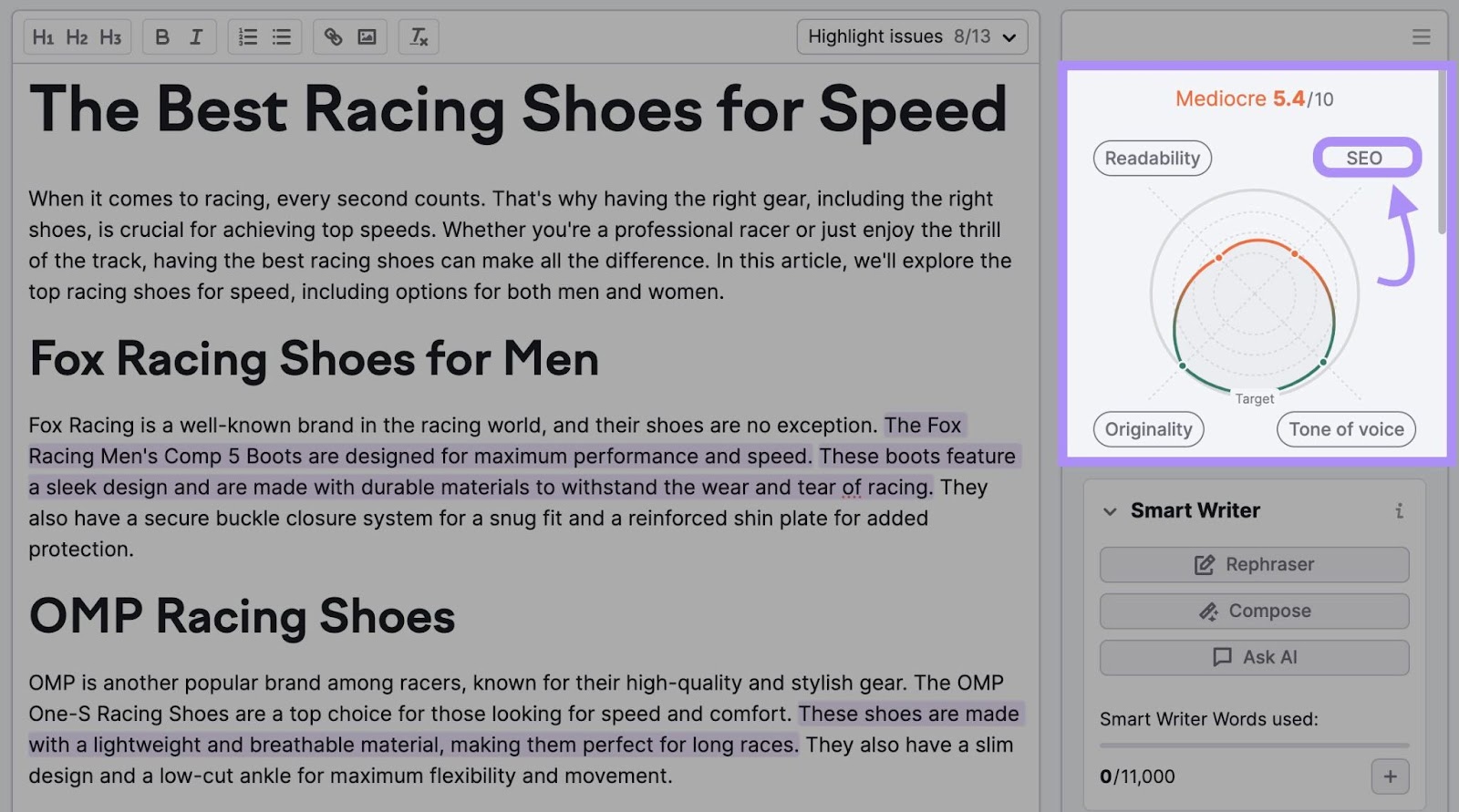
You’ll see keyword recommendations, any issues with your links, and more.
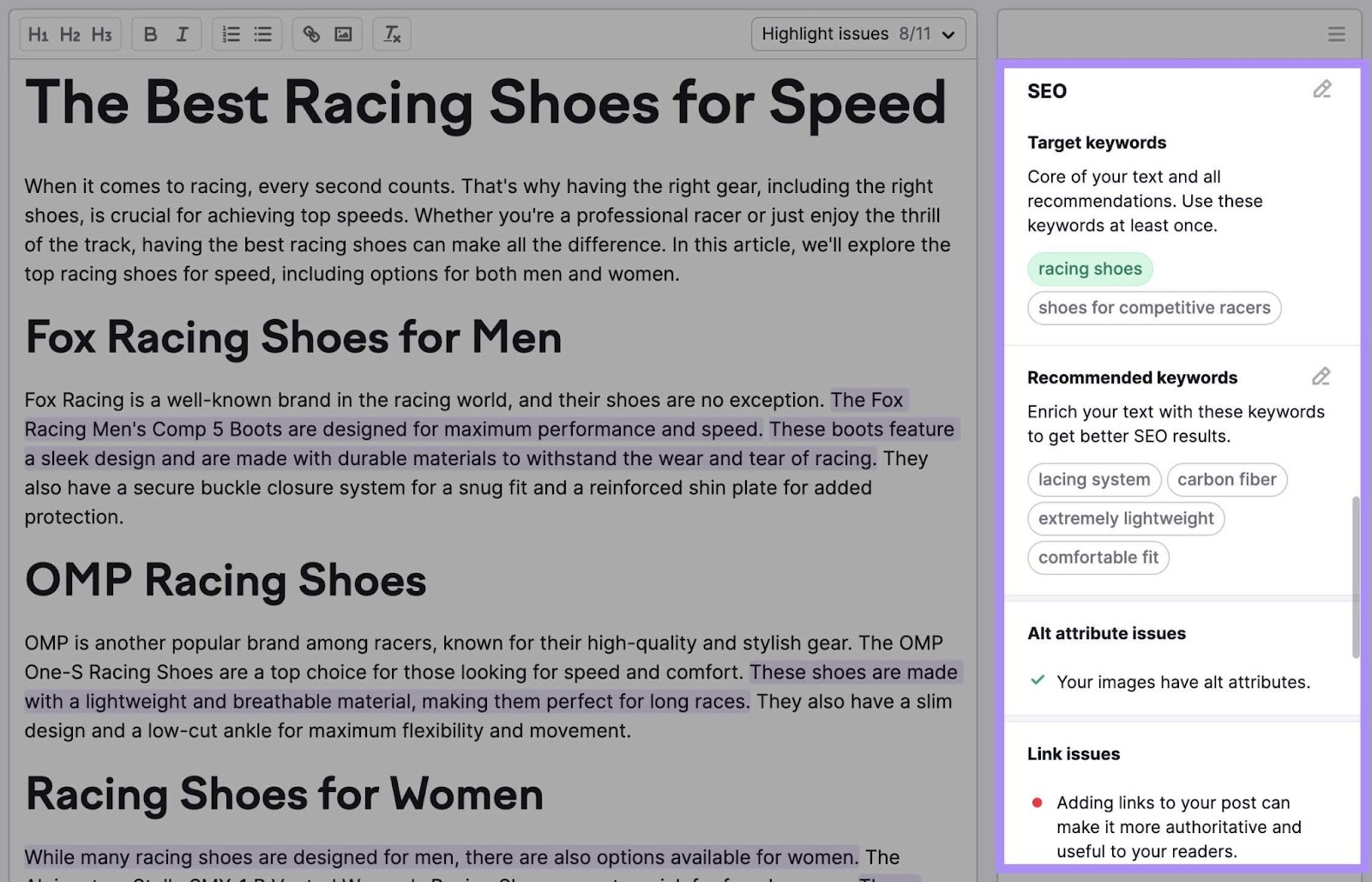
Find more content creation tools in these articles:
Creating Your Content Workflow
Once you’ve decided on your preferred content workflow type and the content you’ll produce, you’re ready to create your content workflow.
So, follow these five steps.
You may need to develop separate content workflows for each type and format of content you want to create.
1. Identify Your Content Creation Stages
These stages represent the main events in the content creation process, like:
- Determining the content’s intent
- Researching a topic and keywords
- Preparing a content brief
- Writing the draft
And they’ll form the statuses of your status-based content workflow. Or help you establish the tasks in your task-based or hybrid content workflow.
If you’re unsure where a stage starts and ends, think about:
- The points in content creation where a team member hands off their work for another team member’s action. At the point where the writer submits their draft for an editor to edit, the writer’s writing of the draft could be one stage. And the editor’s editing of the draft could be another.
- The “checkpoints” at which there is significant progress in your content creation efforts. The preparation of an article brief, the completion of the draft, and the publication of the draft could be three separate stages of an article creation workflow.
2. Flesh Out Your Content Creation Tasks
List the actions that happen at each stage of content creation. They’ll form the tasks in your task-based or hybrid content workflow. Or, provide clarity into the work happening at a status-based content workflow’s various stages.
To identify these tasks, envision the content creation process step by step. Keep asking yourself: “What comes next?”
For example:
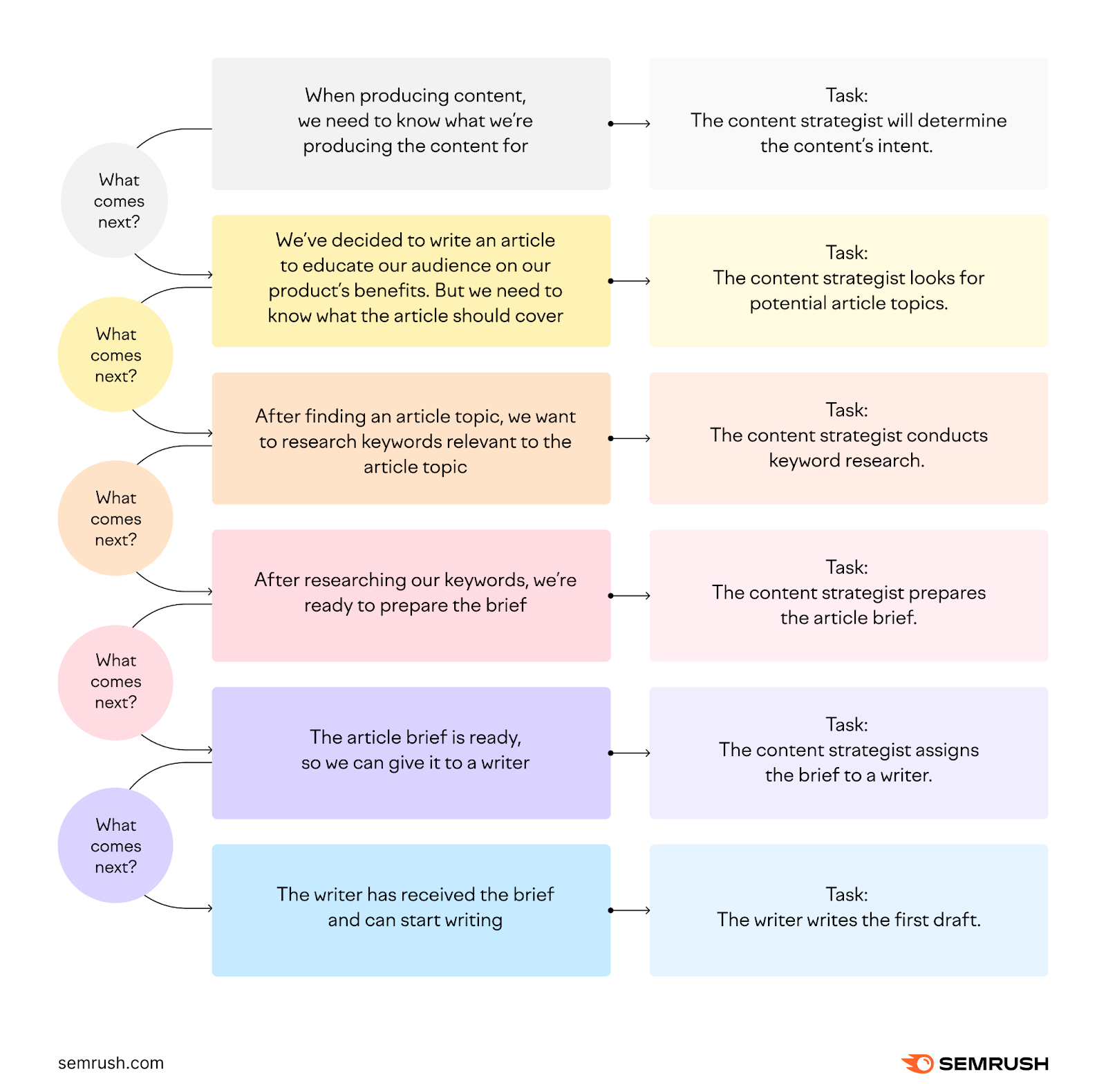
So on and so forth.
Approach this thought process systematically until you’ve listed all the tasks you and your team will need to complete to produce the piece of content.
3. Define Team Roles
Go through your list of content creation tasks and assign them to different team roles.
This way, the person fulfilling a certain role will know what they’re supposed to do when the project reaches them. And can hand their deliverable to the next person after that.
The result?
The content project proceeds as smoothly as possible.
Examples of team roles are:
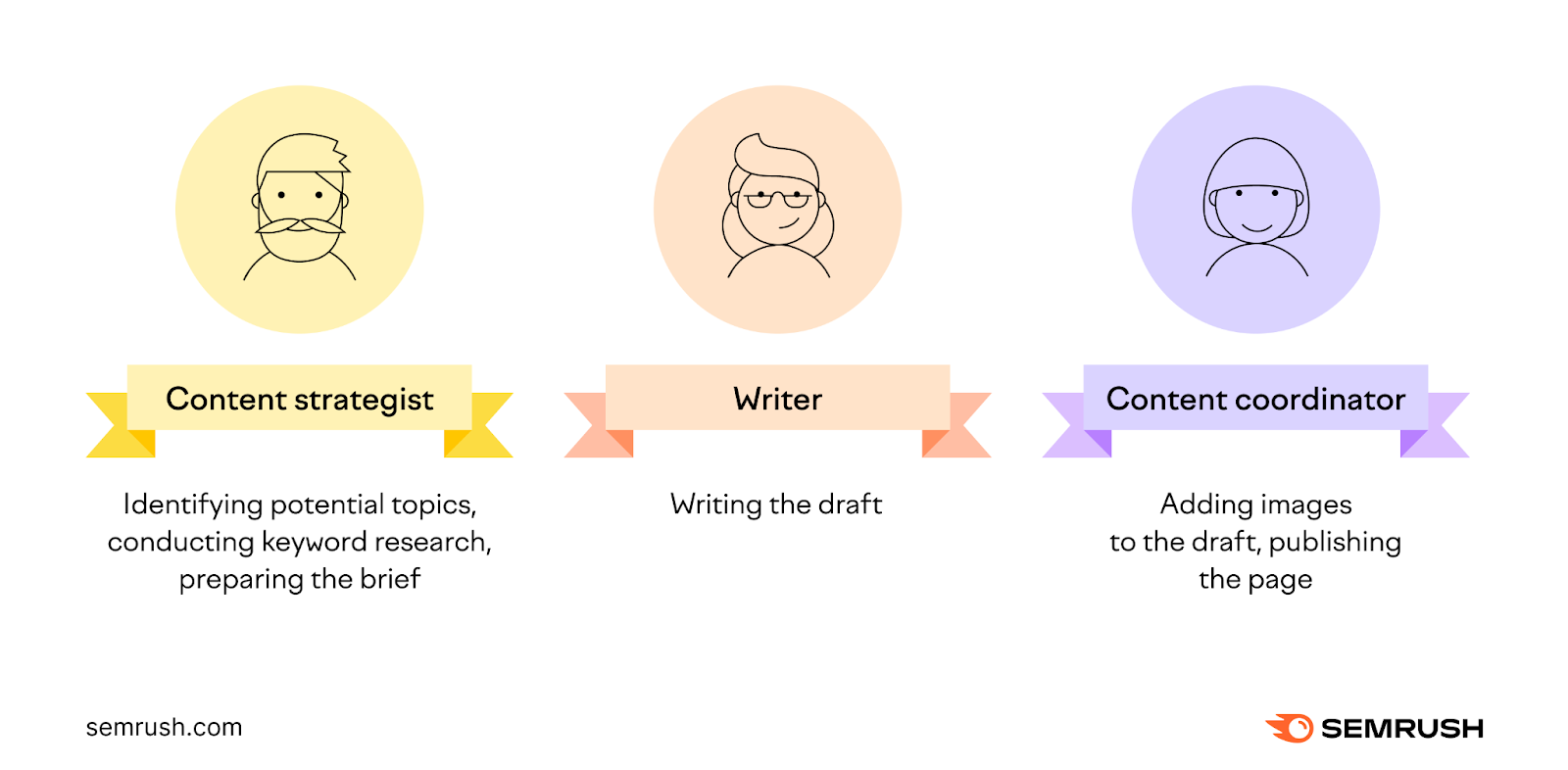
There’s no need to identify specific individuals for the team roles at this point. E.g., “Harry will be the content strategist and Susan will be the content coordinator.”
You’ll do this at the next step instead.
4. Assemble Your Content Creation Team
Identify the people who will fulfill the team roles you’ve defined. And give them access to the content production tools they need for their work.
Your team members could be full-time staff. Especially if you’ve hired them for specific roles, like an in-house editor.
You could also engage freelancers to help with content creation.
Depending on your available resources, a single team member may take on multiple roles.
For example, the person helping to edit pages under the “Editor” role may also help to publish pages under the “Content coordinator” role.
5. Set Up Your Content Workflow in a Project Management and Collaboration Tool
Project management and collaboration tools provide a platform for visualizing your content workflow. They offer features for:
- Managing your content projects’ activities. These include tracking a project’s current status and the team members assigned to a task.
- Facilitating team collaboration. By assigning tasks to individuals so they know they’re responsible for these. Or letting team members leave comments on tasks for each other.
- Automating content workflow-related tasks. E.g., automatically informing a writer of their new assignment via email when a project’s status changes to “Ready for Writing.”
All these make for effective content workflow management. Compared to trying to track everything in your head.
Popular project management and collaboration tools include Monday.com and ClickUp. Once you’ve decided on a tool, set it up with the data columns you’ll need to manage your content workflow. And invite your team to it.
Here’s how managing a blog content workflow using Monday.com could look:
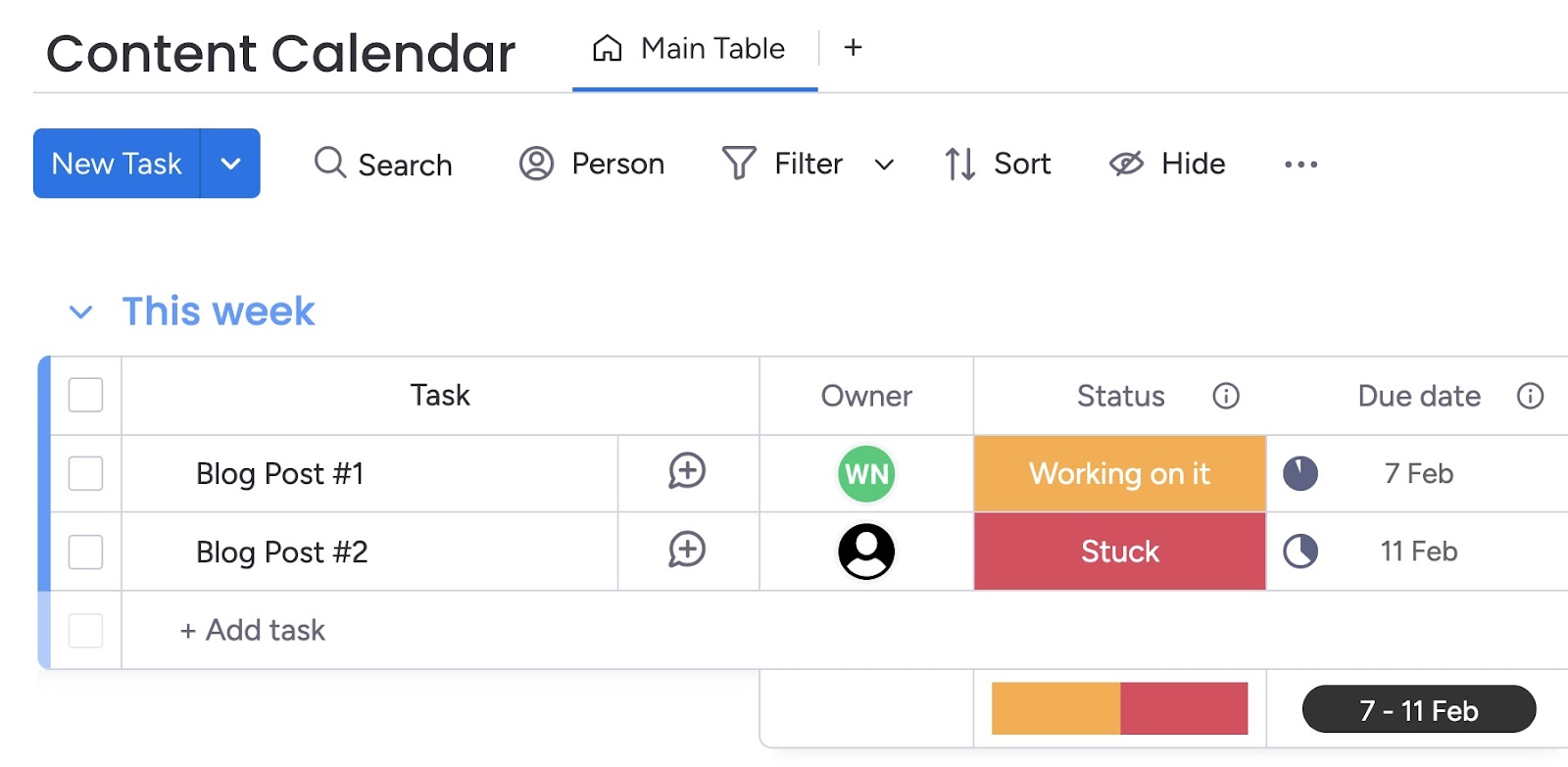
Anyone looking at this content workflow can get all this information:
- The blog post’s title
- The writer assigned to write the blog post
- The task’s current status
- The deadline for submitting the first draft
In just one glance.
Monitoring and Improving Your Content Workflow
Run your content workflow once it’s ready. And monitor it to see how you can improve on it.
Here’s how:
Audit Your Content Regularly
Auditing your content means to assess it against certain benchmarks. Like:
- Its performance
- Your content goals
This way, you can see how your content is performing against these benchmarks. And whether your content workflow needs refining to match.
Various analytics and reporting tools can help with content audits.
For example, is one of your content goals to increase your search visibility?
If yes, use Semrush’s Position Tracking tool to automate the tracking of your content’s search rankings. And get weekly email reports on them.
To set it up, log in to your Semrush account and click “SEO” > “Position Tracking.”
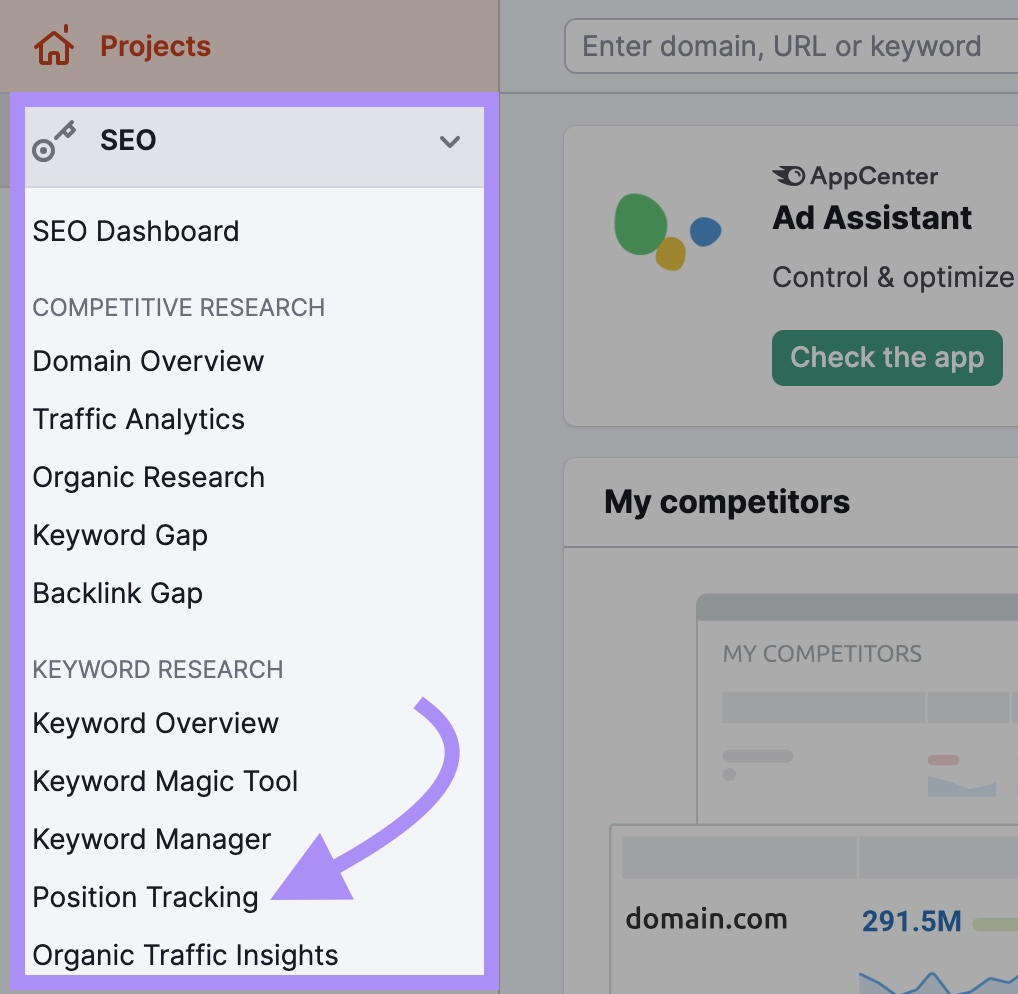
Type your domain into the tool. Then, click “Set up tracking.”

Select:
- Whether you want to track your root domain, its subdomain, or subfolder
- The search engine whose rankings you want to track
- The device type for which you want to track rankings
- The location and language for which you want to track rankings
Then, click “Continue To Keywords.”
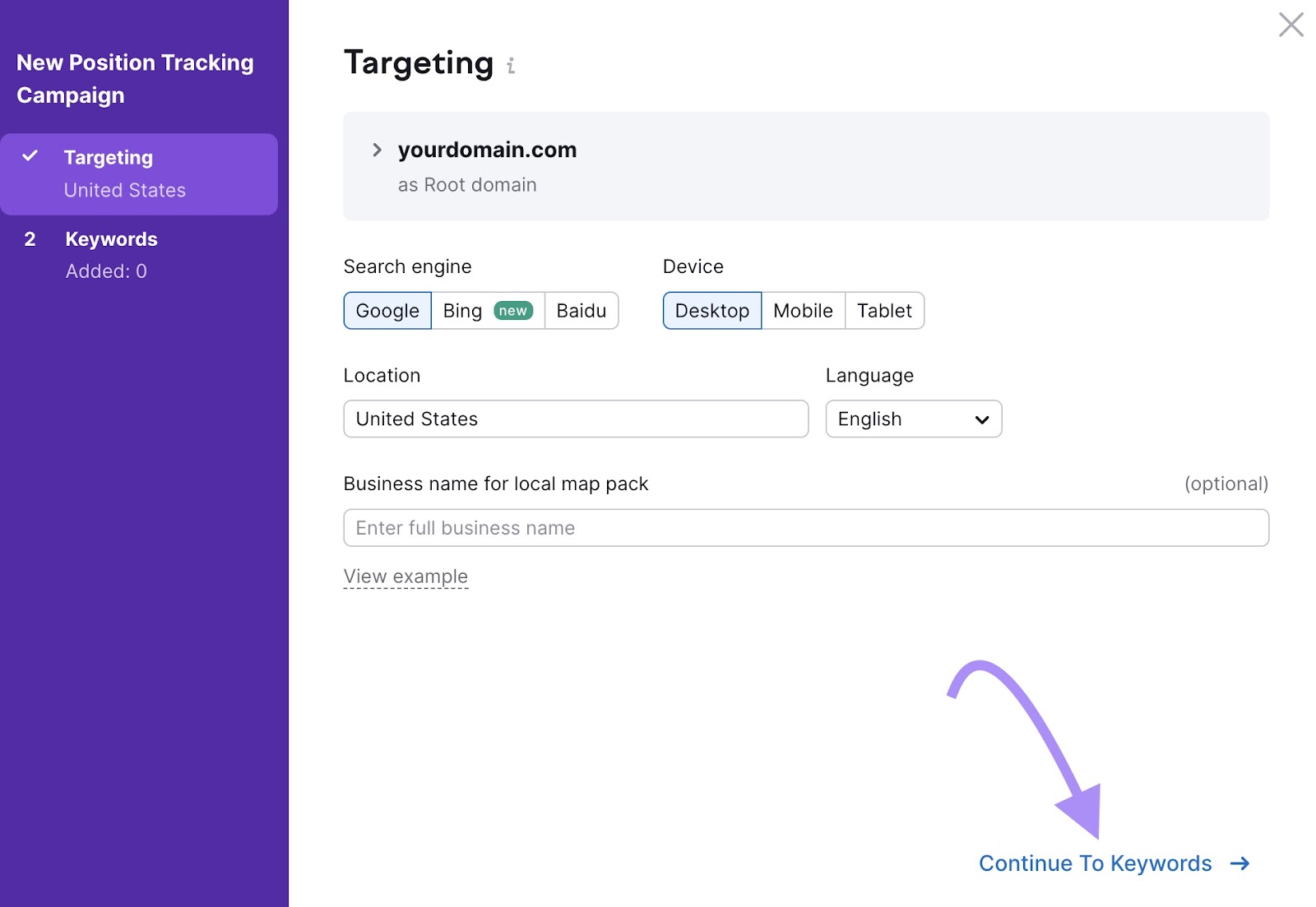
Next, enter the keywords you want to track. You can also click “Import from” to import a keyword list from sources like a CSV file or Google Analytics.
Click “Add keywords to campaign” when you’re done.
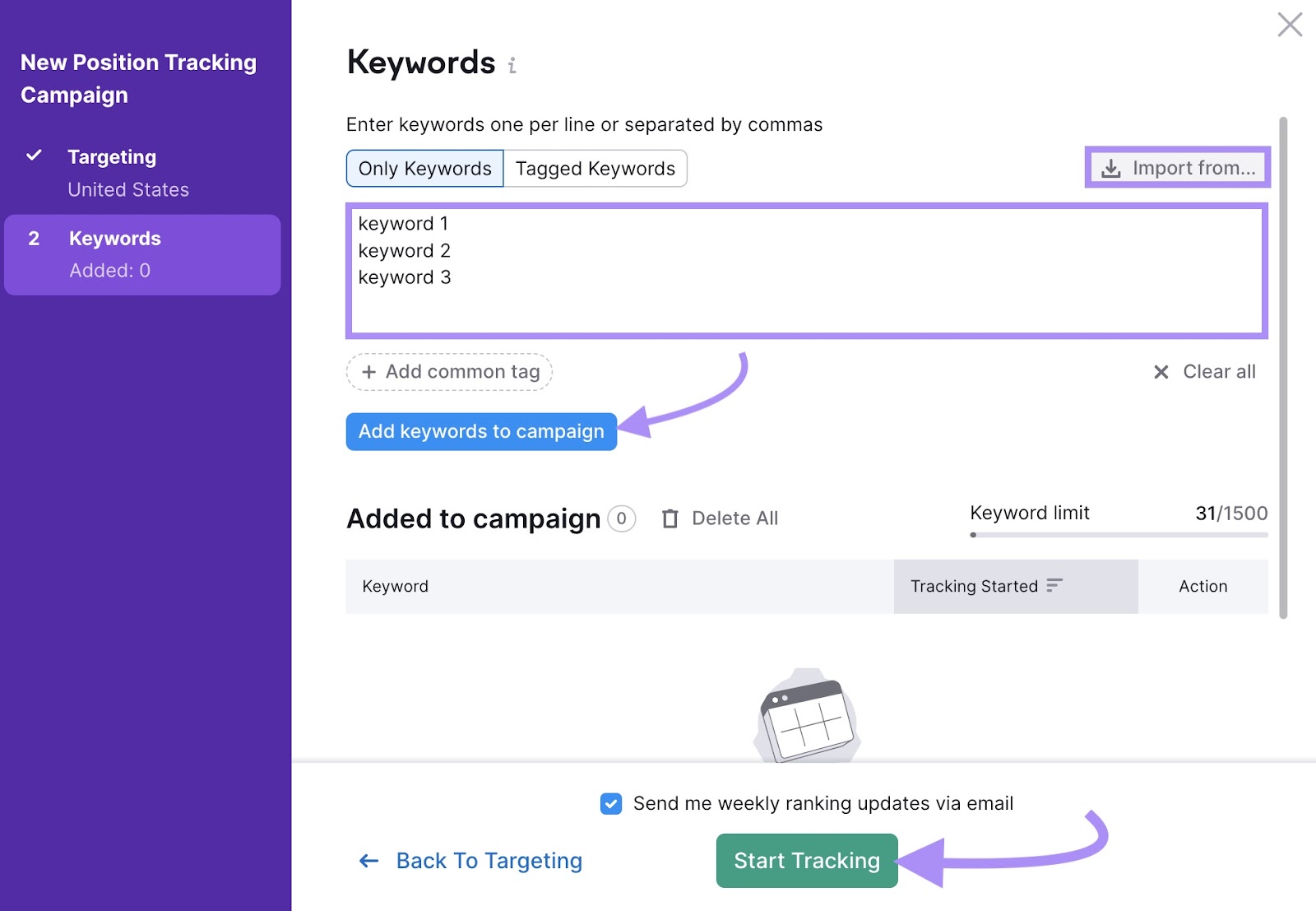
Position Tracking will add the keywords to your tracking campaign.
It will also send you a weekly email of your keyword rankings. If you don’t want to receive this email, uncheck the “Send me weekly ranking updates via email” checkbox.
Click “Start Tracking,” and the tool will start gathering rankings data.
When it has finished doing so, you can view information like:
- Your tracked keywords’ rankings
- Your website’s visibility for your tracked keywords
- The rankings distribution for your tracked keywords
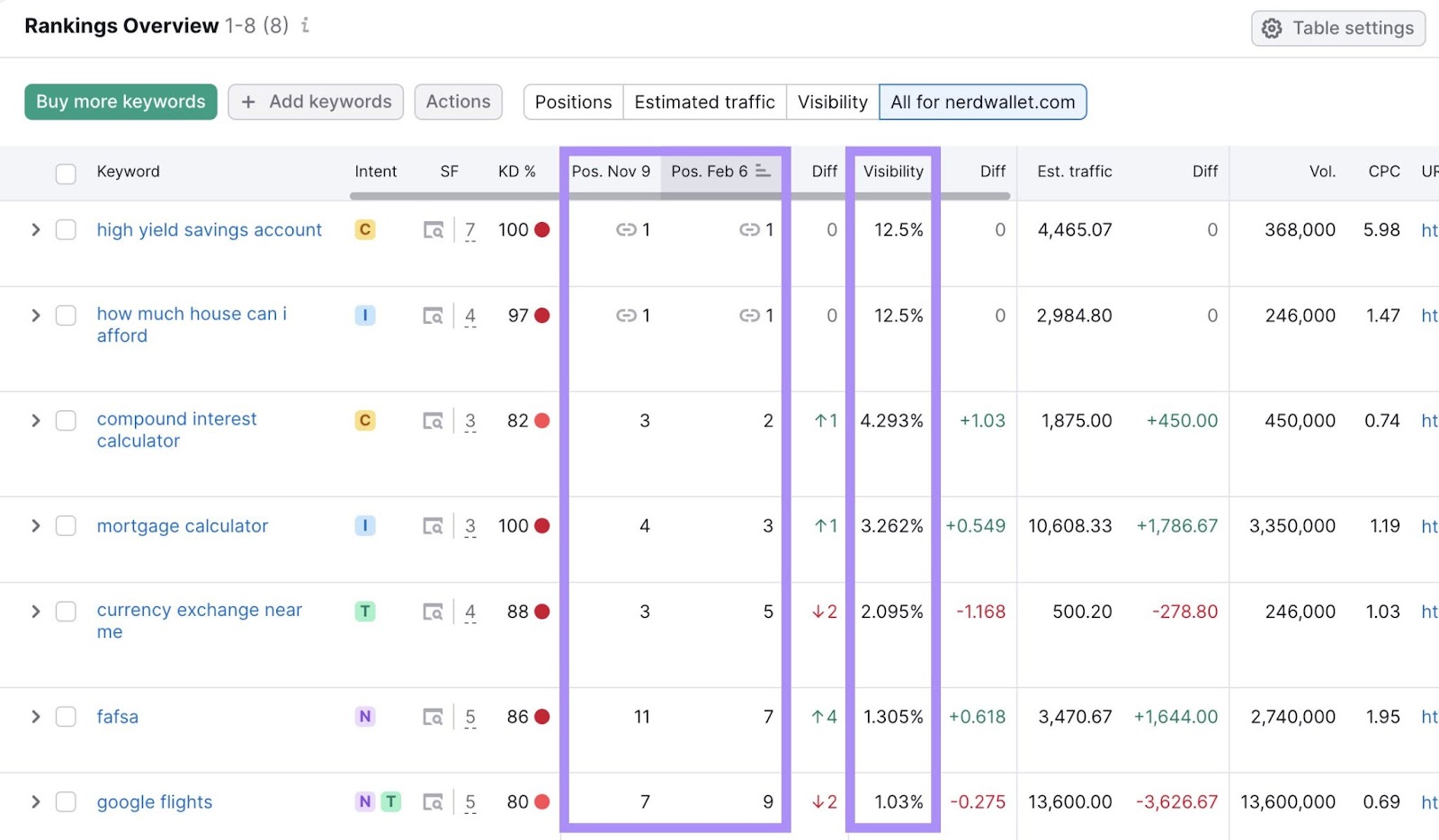
Use this data to evaluate your content’s visibility in the search results. And whether you need to take action to improve it.
Further reading: Top Content Marketing Solutions for Boosting Efficiency and ROI
Refine Your Content Workflow
A content workflow isn’t set in stone. And may need adjusting from time to time.
Because as you execute it, you may:
- Discover aspects of your content workflow you want to improve upon. Like simplifying your content production process. Or using more advanced content production tools.
- Need to change your content workflow to accommodate changes to your content. E.g., Undertaking translation work after deciding to translate existing content
If your content workflow needs urgent modification, update it as soon as possible. But even if it seems to be humming along, schedule regular reviews of it with your team.
Doing this, you’ll know how your content workflow is working for them. And whether it needs revising to help your team do their best work. So it continues to get you your desired results.
Improve Your Content Workflow
A proper content workflow may take time to put together and document. But once you implement yours—and regularly maintain it—you’ll find content creation to be a more systematic, efficient, and scalable process.
These Semrush tools are useful additions to any content workflow:
Sign up for a Semrush account to try them for free.
This post was updated in 2024. Excerpts from the original article by Amanda Milligan may remain.
Source link : Semrush.com
